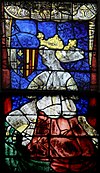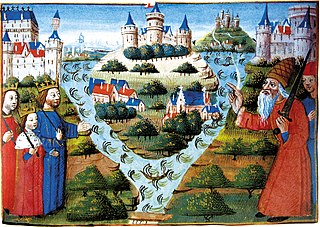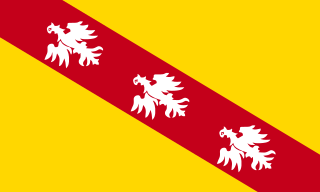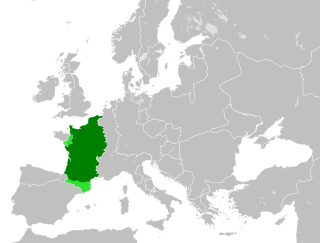Queen of Provence
- See: List of Frankish queens and List of Burgundian queens.
After the division of the Carolingian Empire by the Treaty of Verdun (843), the first of the fraternal rulers of the three kingdoms to die was Lothair I, who divided his middle kingdom in accordance with the custom of the Franks between his three sons. Out of this division came the Kingdom of Provence, given to Lothair's youngest son, Charles. A heritage of royal rule was thus inaugurated in Provence that, though it was often subsumed into one of its larger neighbouring kingdoms, it was just as often proclaiming its own sovereigns.
Carolingian Dynasty, 855–879
| Picture | Name | Father | Birth | Marriage | Became Queen | Ceased to be Queen | Death | Spouse |
|---|---|---|---|---|---|---|---|---|
| Engelberga | Adelchis I, Count of Parma | 830 | 5 October 851 | 24 January 863 husband's accession | 12 August 875 husband's death | 896-901 | Louis II of Italy | |
 | Richilde of Provence | Bivin of Gorze | 845 | 870 | 12 August 875 husband's ascession | 6 October 877 husband's death | 2 June 910 | Charles the Bald |
 | Adelaide of Paris | Adalard, Count of Paris | 850/853 | February 875 | 6 October 877 husband's accession | 10 April 879 husband's death | 10 November 901 | Louis the Stammerer |
Bosonid Dynasty, 879–933
| Picture | Name | Father | Birth | Marriage | Became Queen | Ceased to be Queen | Death | Spouse |
|---|---|---|---|---|---|---|---|---|
| Ermengard of Italy | Louis II (Carolingian) | 835/852/855 | June 876 | 10 April 879 husband's accession | 11 January 887 husband's death | 22 June 896 | Boso I | |
| Anna of Constantinople | Leo VI the Wise (Macedonian) | 888 | around 900 | 912 | Louis IV | |||
| Adelaide | Rudolph I (Elder Welf) | - | 902-914 | 28 June 928 husband's death | 943 | |||
| Alda (or Hilda) | - | - | after 924 | 5 June 928 husband's accession | before 932 marriage annulled | - | Hugh I | |
| Marozia of Tusculum, Senatrix and Patricia of Rome | Theophylact I, Count of Tusculum (Tusculani) | 890 | 932 | December 932 933 Provence ceases to be a separate kingdom. | 932/937 | |||
In 933, Provence ceases to be a separate kingdom as Hugh exchanged it with Rudolph II of Upper Burgundy for the Iron Crown of Lombardy, that is, rule of Italy.
Welf Dynasty, 888–1032
| Picture | Name | Father | Birth | Marriage | Became Queen | Ceased to be Queen | Death | Spouse |
|---|---|---|---|---|---|---|---|---|
 | Bertha of Swabia | Burchard II, Duke of Swabia (Hunfridings) | 907 | 922 | 933 husband's accession | 11 July 937 husband's death | after 2 January 966 | Rudolph I |
| Adelane | - | 935/40 | 950s? | 23 March 963/4 | Conrad III | |||
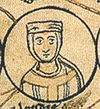 | Matilda of France | Louis IV of France (Carolingian) | 943 | 964 | 26/27 January 981/2 | |||
| Aldiud | - | - | after 981/2 | 19 October 993 husband's death | - | |||
| Agaltrudis | - | - | before 12 January 994 | 21 March 1008 or 18 February 1011 | Rudolph II | |||
| Ermengarde of Savoy | Humbert I, Count of Savoy (Savoy) | - | 24 April/28 July 1011 | 6 September 1032 husband's death | 25/27 August 1057 | |||
In 1032 the kingdom of Burgundy and Provence was incorporated into the Holy Roman Empire as a third kingdom, the Kingdom of Burgundy (later also known as Kingdom of Arles), with the King of Germany or Emperor as King of Burgundy.





